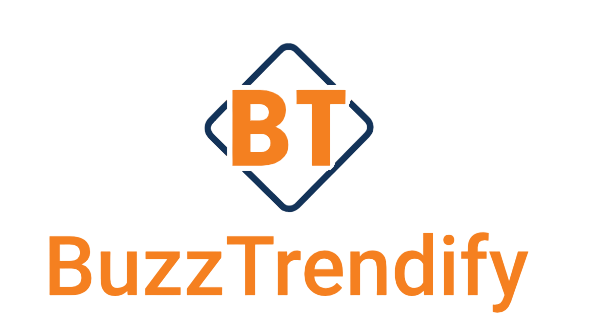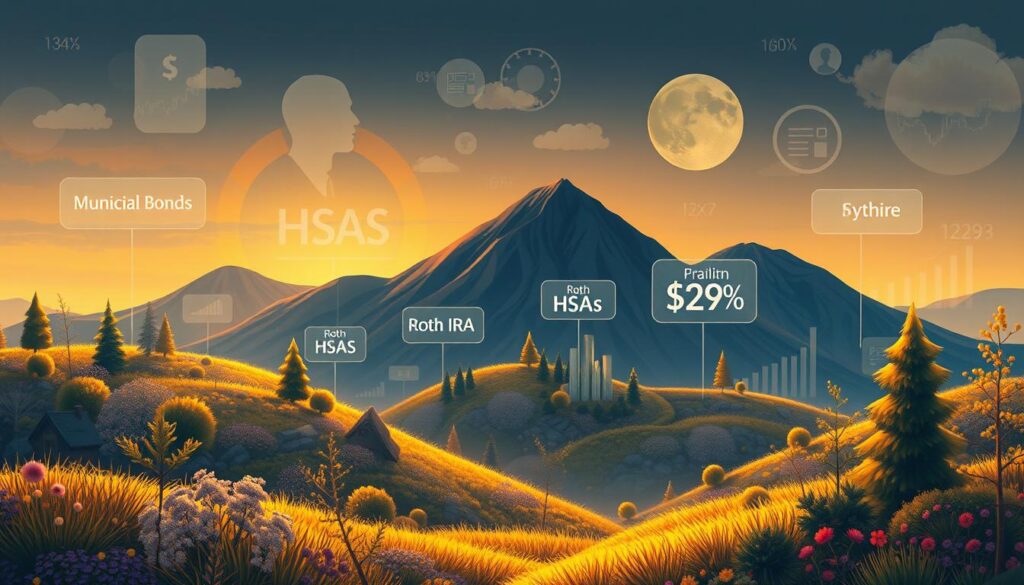Imagine it’s a sunny Saturday afternoon, and you’re in your favorite chair with a warm cup of coffee. As you look at your monthly bills, you start to worry about tax season. You recall talking to a wise friend about tax-free investments.
This idea excites you because you know tax-exempt investments can help your wealth grow without taxes taking a big chunk. Diving into tax-advantaged investments can really change the game. It lets your money grow over time.
By learning how to use these tax-saving investments, you can build a more secure financial future. And you’ll have peace of mind during tax season.
Key Takeaways
- Tax-free investments allow for growth without tax implications.
- Engaging in tax-exempt investments can enhance financial stability.
- Tax-advantaged investments contribute significantly to wealth accumulation.
- Exploring tax-saving investments is key for effective retirement planning.
- Understanding these options can simplify tax season worries.
What Are Tax-Free Investments?
Tax-free investments help grow your wealth without taxes. Knowing what they are is key for smart money choices. They come in many forms, letting your money grow without tax worries.
Definition and Overview
Tax-free investments include things like Roth IRAs, municipal bonds, and Health Savings Accounts (HSAs). They help keep more of your money by avoiding taxes. This makes them a smart part of your financial plan.
Importance for Investors
Tax-exempt investments are very important. They cut down on taxes now and can grow your money over time. Using them wisely can boost your wealth and control taxes better.
Getting tax-free investments right is key for good financial planning. They can greatly improve your financial future.
Types of Tax-Free Investments
Looking into different tax-free investments shows us many options. Each one is designed for different financial goals. They all have special benefits that can help your money grow more efficiently.
Municipal Bonds
Municipal bonds are issued by local governments. The interest from these bonds is often not taxed by the federal government. This makes them great for those who want to earn income while keeping taxes low.
Health Savings Accounts (HSAs)
Health Savings Accounts (HSAs) help you save for medical bills. You can put in money, it grows tax-free, and you can use it for medical costs without paying taxes. This is a smart way to handle healthcare expenses.
Roth IRAs
Roth IRAs let you contribute after-tax money. This means your money grows and you can withdraw it tax-free in retirement. It’s perfect for those who think they’ll pay more taxes later.
529 College Savings Plans
529 College Savings Plans help with college costs. You save money, and it grows without taxes. When you use it for education, you won’t pay federal taxes. It’s a great way to plan for your child’s education.
| Investment Type | Tax Benefits | Best For |
|---|---|---|
| Municipal Bonds | Tax-exempt interest | Income generation |
| HSAs | Triple tax advantage | Medical expenses |
| Roth IRAs | Tax-free growth and withdrawals | Retirement planning |
| 529 Plans | Tax-free earnings and withdrawals | Education savings |
Benefits of Tax-Free Investments
Understanding tax-free investments is key to smart financial planning. These investments help grow your wealth without taxes on returns. They can change how you build your financial future.
Wealth Accumulation
One big plus of tax-free investments is they help you grow your wealth faster. You get to keep more of your profits because of no taxes. This means your investments can grow quicker, making your finances stronger.
Reducing Taxable Income
Using tax-free investments can also lower your taxable income. This means you have more money for savings, investments, or everyday needs. It’s a smart way to manage your finances and keep more cash flowing.
Financial Flexibility
Tax-free investments offer great financial flexibility. They often let you access your money easily, which is vital in emergencies. This flexibility helps you handle unexpected costs or new opportunities without risking your financial health.
How to Get Started with Tax-Free Investments
Starting with tax-free investments requires a clear plan. Understanding my financial goals is key. This helps me make smart investment choices.
Knowing what I want to achieve, like saving for school or retirement, guides my decisions. It points me towards the best investment paths.
Assessing Your Financial Goals
First, I need to assess my financial goals. This step is critical when starting with tax-free investments. It helps me create a strategy that fits my needs.
I look at both short-term and long-term goals. This includes:
- Desired timeline for achieving my goals
- Risk tolerance related to my investments
- Potential future financial needs, such as emergencies or education expenses
Researching Investment Options
After setting my financial goals, I dive into researching tax-exempt options. I explore different investment vehicles to understand their pros and cons. Learning about options like municipal bonds, HSAs, or Roth IRAs helps me find the right fit for my goals.
Using resources like investment platforms, books, and expert advice helps me make informed choices. This leads to better decisions for my financial future.
Key Considerations Before Investing
Before I invest, I think about a few key things. It’s important to know the risks involved. Every investment has its own challenges, like changes in interest rates or the ups and downs of the stock market.
How much risk I’m willing to take on helps me choose the right investments. This choice is critical for my financial future.
Risk Factors in Tax-Free Investments
Looking at tax-free investments, it’s vital to watch out for risks. Market swings can cause unexpected losses. For instance, changes in interest rates can affect the value of municipal bonds.
Knowing these risks helps me make smart choices. It ensures my investments match my financial goals.
Understanding Fees and Charges
Fees and charges are a big deal when it comes to my returns. These can include management fees, transaction costs, or maintenance fees. They all eat into my profits.
Before I invest, I check all the fees. This helps me keep more of my money. It leads to better investment results.
| Investment Type | Typical Risks | Common Fees |
|---|---|---|
| Municipal Bonds | Interest rate risk, credit risk | Management fees, early redemption fees |
| Roth IRAs | Market risk, liquidity risk | Account maintenance fees, fund expense ratios |
| HSAs | Investment risk of chosen assets | Transaction fees, monthly maintenance fees |
| 529 College Savings Plans | Investment risk, state-specific risks | Management fees, fund fees |
The Role of Tax-Free Investments in Retirement Planning
Tax-free investments are key to my retirement plan. They grow without taxes, which is vital for my long-term financial health. By focusing on these, I aim for a secure and independent retirement.
Long-Term Growth Strategies
Adding tax-free investments to my plan helps me grow for the future. Options like Roth IRAs and Health Savings Accounts (HSAs) are great. They let my investments grow without taxes, which boosts my savings over time.
Enhancing Retirement Income
My goal is to increase my retirement income with tax-free growth. Having tax-free withdrawals means more money for enjoying life and unexpected costs. Tax-free investments are essential for a comfortable retirement.
Tax-Free Investments for Education Savings
Planning for education expenses can be tough, with rising tuition costs. Education savings plans offer clear paths to meet these goals. 529 plans are a standout due to their unique benefits and flexibility.
Benefits of 529 Plans
529 College Savings Plans are a great way to invest in education tax-free. Your contributions grow without being taxed, making your money work harder. When you use the money for qualified education expenses, you won’t pay federal taxes.
This is a big plus compared to other savings options, where interest is taxed. Many states also offer tax breaks for contributions, making 529 plans even more valuable.
Comparison of Education Savings Accounts
When looking at education savings plans, it’s important to compare 529 plans to others like Coverdell ESAs and custodial accounts. Each has its own strengths and weaknesses. For example, 529 plans have higher contribution limits and can be used for more tax-free withdrawals.
Coverdell ESAs have fewer restrictions but are limited in how much you can contribute. Here’s a table comparing key features of these accounts:
| Feature | 529 College Savings Plan | Coverdell ESA |
|---|---|---|
| Maximum Contribution | Varies by state, often over $300,000 | $2,000 per beneficiary per year |
| Tax-Free Withdrawals | For qualified education expenses | For K-12 and college expenses |
| Income Limit for Contributors | No limit | $220,000 (married filing jointly) |
| Investment Options | Variety based on plan | More flexibility in choosing investments |
Common Mistakes to Avoid
Exploring tax-free investments, I’ve found several common mistakes. These can harm my financial plans. Knowing these pitfalls helps me invest more wisely.
Misunderstanding Tax Implications
Many people misunderstand tax rules for tax-free accounts. For example, Roth IRAs and Health Savings Accounts have specific rules. Not knowing these can lead to big mistakes.
Neglecting Diversification
Investment diversification is often overlooked. It’s easy to focus on one promising area. But, this can risk my whole portfolio. A balanced mix of investments is key to achieving my goals.
Resources for Tax-Free Investment Research
There are many resources for tax-free investing that can help me make better choices. Online tools are key in my financial planning. They let me see how my investments might grow.
Online Tools and Calculators
Many websites have tools to help with tax-free investments. Savings calculators show how much my accounts could grow. They ask for my initial investment, how much I add each year, and what returns I expect.
Financial Advisors and Planners
Talking to financial advisors can really help my investment path. They give advice based on my financial situation. They also keep up with changes that could affect my plans.
Conclusion: Making the Most of Tax-Free Investments
Understanding tax-free investments is key to saving more and growing my wealth. These strategies help me build wealth, lower my taxes, and keep my finances flexible. This makes them a vital part of my financial plan.
I also want to encourage others to look into tax-free investments that fit their financial goals. Options like Roth IRAs and 529 plans have unique benefits. They can strengthen my financial plan and lead to a more stable future.
By diving into tax-free investments, I’m not just improving my finances now. I’m also setting up a wealthier future for myself and maybe even my family. Staying informed and taking action can make a big difference in my financial health.
FAQ
What are tax-free investments?
Tax-free investments are special financial tools. They either make income that doesn’t get taxed or let earnings grow without taxes. Examples include Roth IRAs, municipal bonds, and Health Savings Accounts (HSAs).
How do tax-exempt investments help in wealth accumulation?
These investments don’t tax growth. So, more money is available for reinvestment. This helps build wealth over time.
What are the benefits of using HSAs as tax-efficient investments?
HSAs offer triple tax benefits. Contributions, earnings, and withdrawals for medical expenses are all tax-free. They’re great for saving on health costs and taxes.
Can you explain the advantages of Roth IRAs?
Roth IRAs let you invest after-tax income. This means your money grows and is withdrawn tax-free in retirement. It’s a smart way to boost retirement income without taxes.
How do 529 College Savings Plans qualify as tax-sheltered investments?
529 plans help families save for education. Earnings grow tax-free for qualified education expenses. This offers big tax benefits for saving for school.
What are the common mistakes to avoid when investing in tax-free options?
Mistakes include not understanding tax rules for withdrawals and contributions. Also, not diversifying investments can limit growth.
What resources can help me learn about tax-deferred investments?
Look to reputable financial websites, government tax resources, and financial advisors. They offer guidance and the latest on tax-efficient investments.
Why are tax-advantaged investments important for my financial goals?
Tax-advantaged investments lower your taxable income and boost wealth. They’re key to smart financial planning and securing your future.





